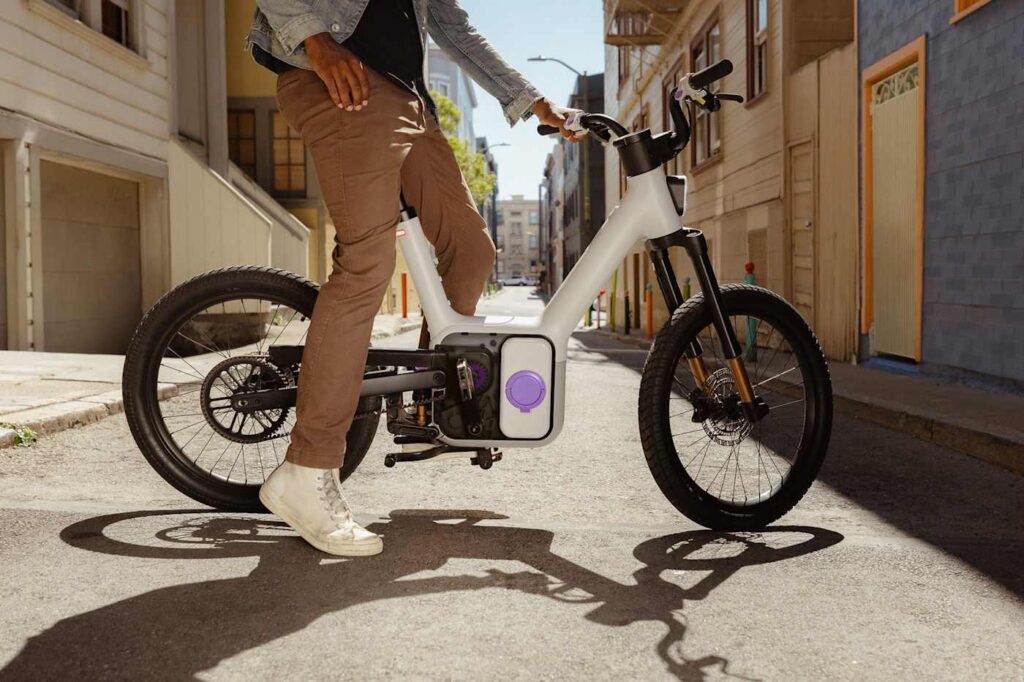Rivian’s Spinoff, Also, Unveils First E-Bike with a Virtual Drivetrain: A Glimpse into the Future of Micromobility
The electric vehicle revolution is no longer confined to cars and trucks. Rivian, the adventure vehicle company known for its electric pickups and SUVs, has spun off its micromobility division into a standalone startup called Also. And Also is already making waves with its first product: a versatile e-bike featuring a unique “virtual drivetrain.” This innovative approach promises to redefine the e-bike experience, offering unprecedented adaptability and user-friendliness.
But what exactly is a virtual drivetrain, and why is it a game-changer? Let’s dive into the details of Also’s exciting new e-bike and what it means for the future of personal transportation.
The Also TM-B E-Bike: Versatility Redefined
A Modular Design for Every Rider
The TM-B e-bike is Also’s attempt to create a true “do-it-all” machine. The modular frame is designed to adapt to a wide range of use cases, from daily commuting and leisurely trail riding to hauling kids and cargo. This adaptability is made possible through a clever design that allows for easy swapping of accessories.
Imagine using the same e-bike for your weekday commute, then easily transforming it into a family-friendly ride for weekend adventures. This is the promise of the TM-B. It can accommodate a bench seat for passengers or a rear cargo rack capable of supporting up to 35 kilograms (approximately 77 pounds). This versatility eliminates the need for multiple bikes, making it a practical and cost-effective solution for many riders.
Tool-Free Transformations
One of the most impressive aspects of the TM-B’s design is its ease of use. Swapping seats and accessories is a breeze, requiring no tools. A simple button on the bike’s touchscreen display controls a latching mechanism that releases the seat. This intuitive design allows riders to quickly and easily adapt the bike to their specific needs.
Picture this: you’re heading to work and want a streamlined riding experience. You simply use the touchscreen to detach the rear seat and enjoy a lighter, more agile ride. Later, you’re picking up groceries and need extra carrying capacity. With a touch of a button, you attach the cargo rack and you are set. The TM-B makes adaptability simple and effortless.
The Virtual Drivetrain: A New Approach to E-Bike Performance
Software-Defined Riding Experience
While details are still emerging, the “virtual drivetrain” seems to refer to a software-driven approach to managing the e-bike’s motor and power delivery. Instead of relying solely on physical components and fixed settings, the bike likely uses sophisticated algorithms to optimize performance based on rider input and riding conditions. This allows for a more personalized and responsive riding experience.
Consider how modern cars use software to manage engine performance, traction control, and other critical functions. Also appears to be applying a similar concept to e-bikes, allowing for a more refined and adaptable riding experience. It will be interesting to see what parameters are customizable for the rider.
Potential Benefits of a Virtual Drivetrain
The potential benefits of a virtual drivetrain are numerous. It could allow for fine-tuning of power output, regenerative braking, and other parameters to suit individual riding preferences and terrain. It could also enable over-the-air updates to improve performance and add new features over time.
Imagine being able to adjust the level of assistance based on your fitness level or the difficulty of the terrain. Or receiving software updates that optimize battery efficiency or improve the responsiveness of the motor. The virtual drivetrain opens up a world of possibilities for customization and continuous improvement.
What’s Next for Also and the Future of Micromobility?
Beyond E-Bikes: Electric Quads and a Broader Vision
Also is not stopping at e-bikes. The company is also developing two pedal-assisted electric quads, indicating a broader vision for micromobility. These quads could be used for a variety of purposes, from personal transportation to light commercial applications.
The introduction of electric quads suggests that Also is looking to expand beyond the traditional e-bike market and offer solutions for a wider range of needs. This is a significant move that could have a major impact on the future of urban transportation.
A Glimpse into the Future
Also’s first e-bike, with its modular design and virtual drivetrain, represents a significant step forward in micromobility. It combines versatility, ease of use, and cutting-edge technology to create a truly unique riding experience.
As the micromobility market continues to grow, companies like Also are poised to play a major role in shaping the future of personal transportation. By embracing innovation and focusing on user-centered design, they are helping to create a more sustainable and accessible future for all. The TM-B and future models promise exciting advancements in the micromobility space.
